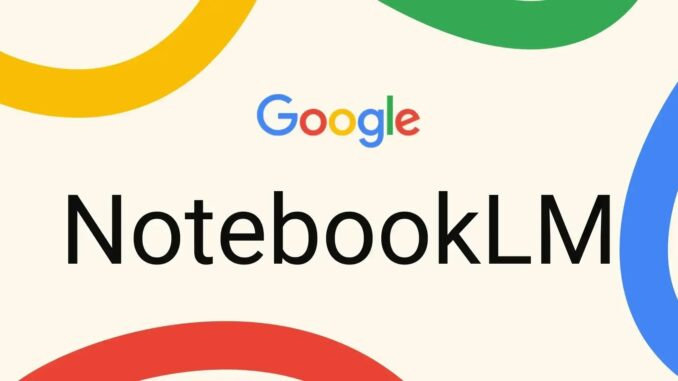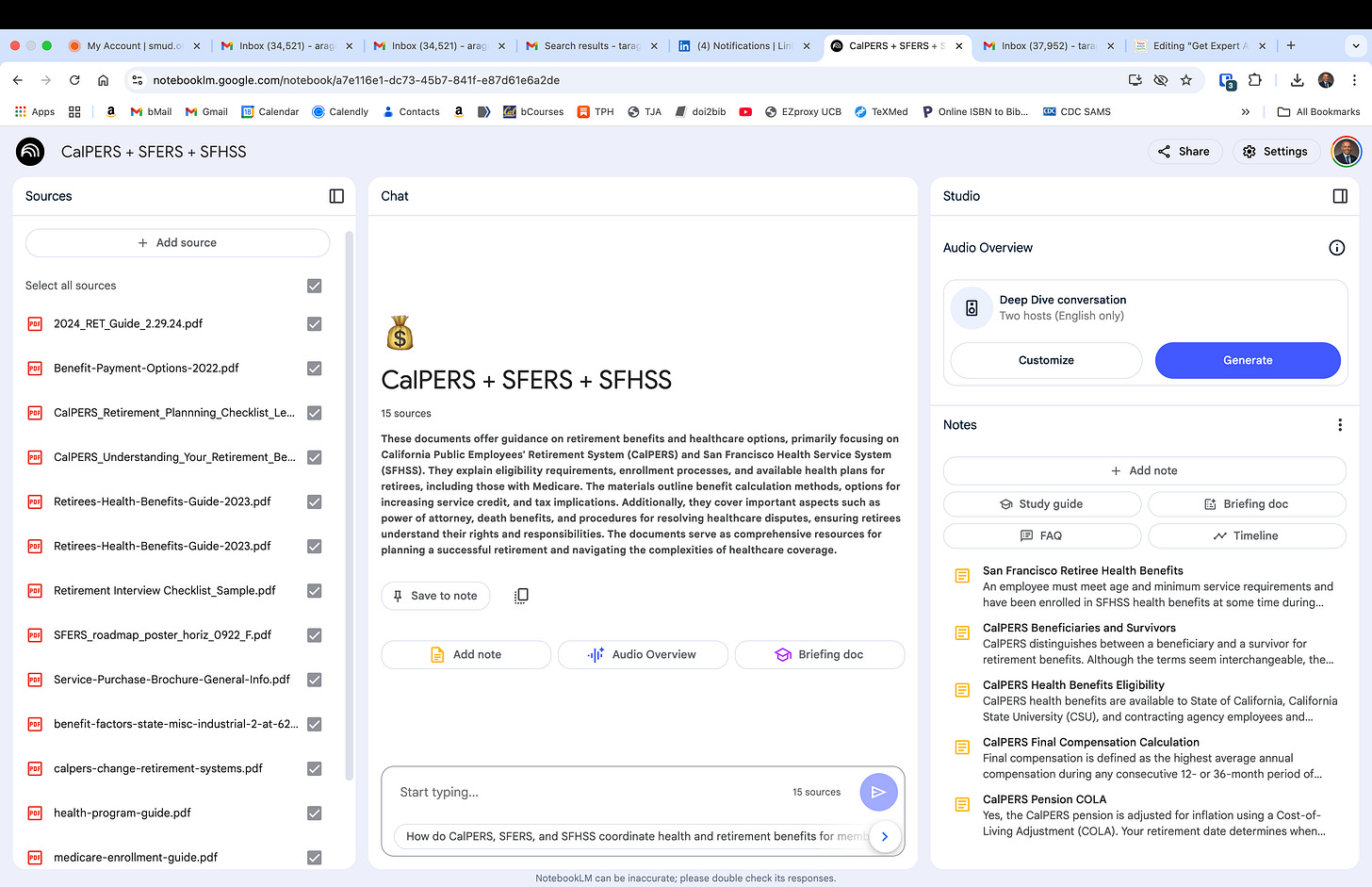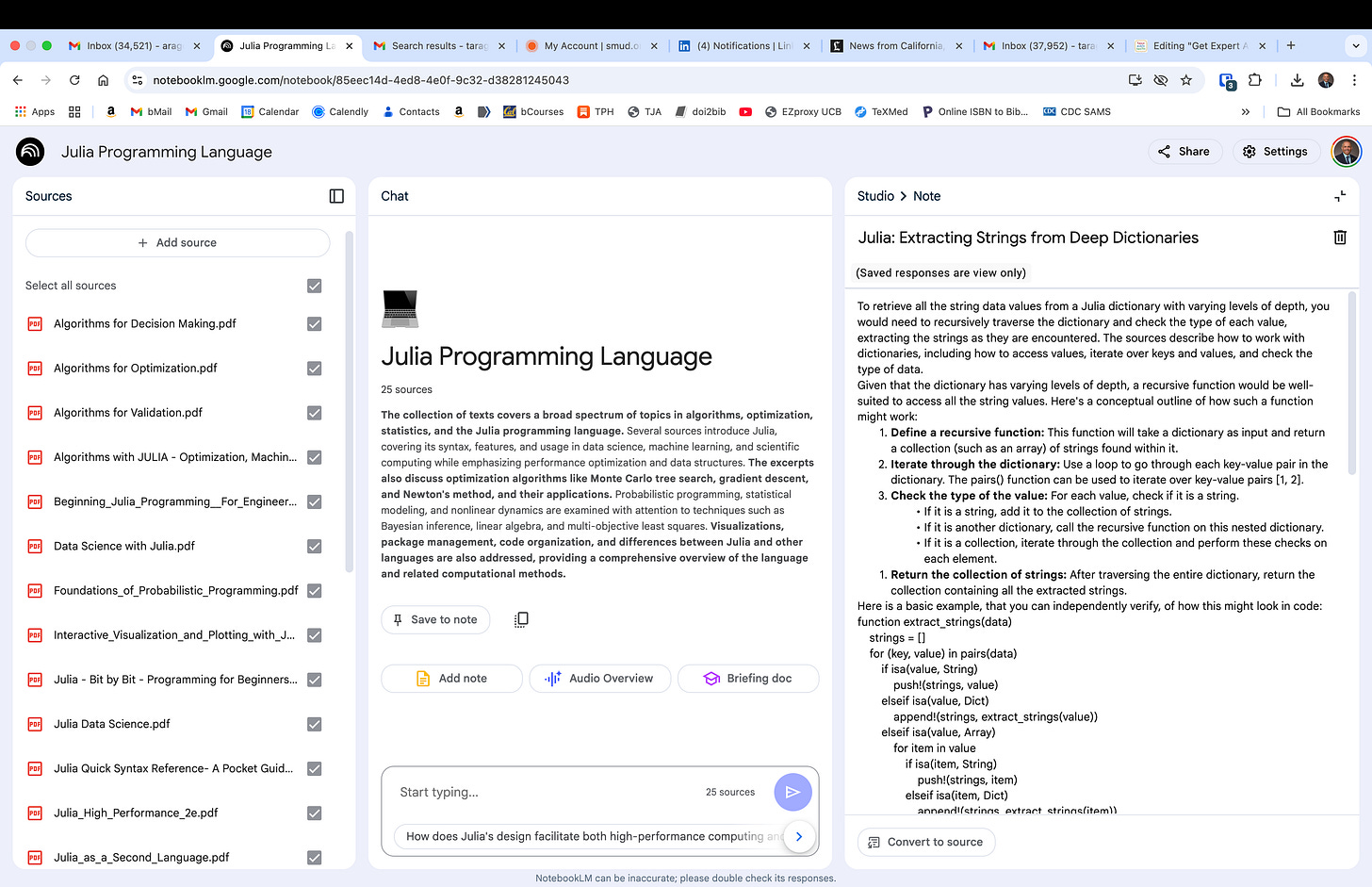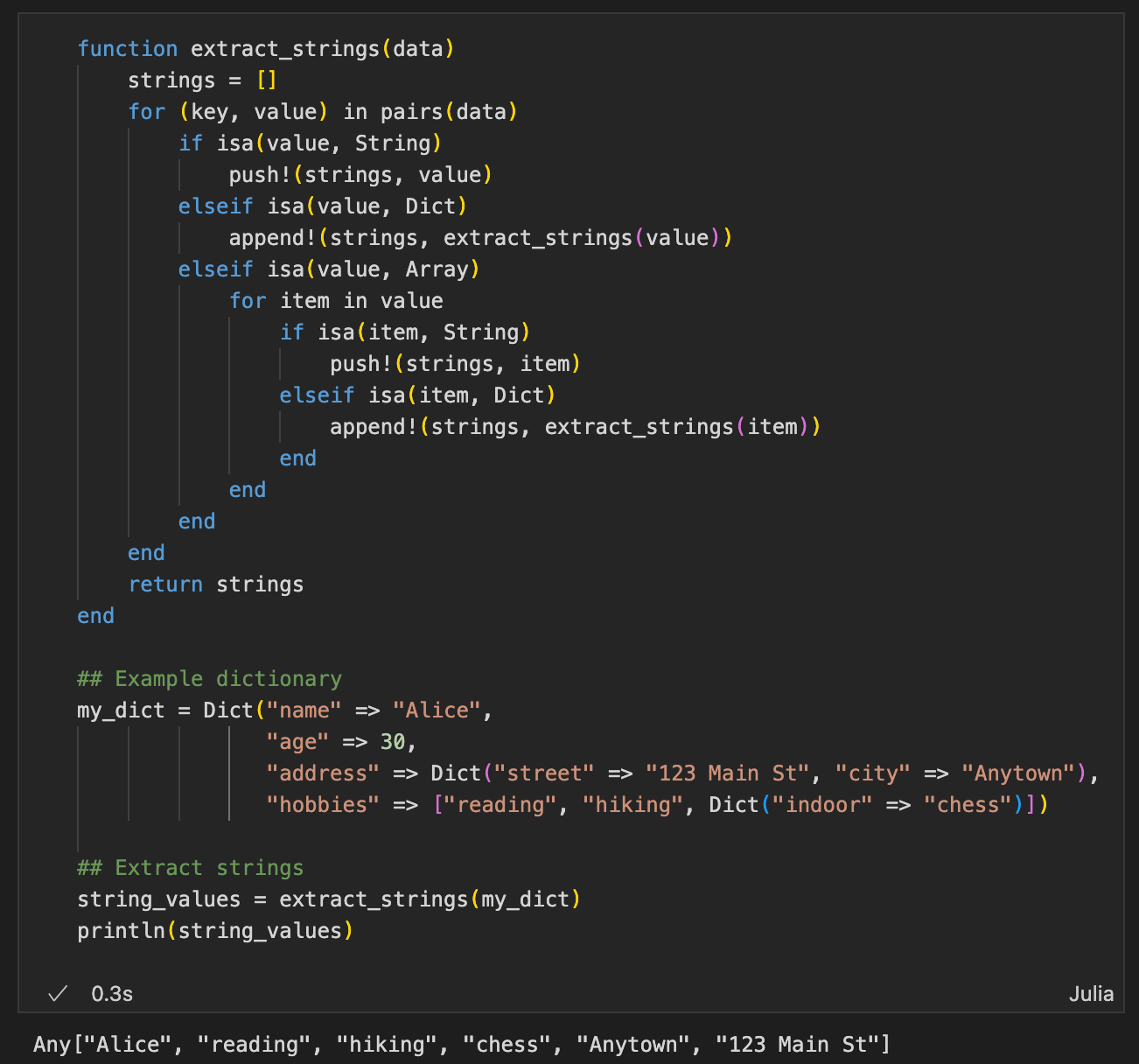Get an Expert Assistant with NotebookLM
Google's NotebookLM enables creating an expert personal assistant in minutes
When you query a large language model (LLM) such as ChatGPT or Gemini, they provide responses based on data sources that they have selected. The sources may not be the most authoritative and best sources to answer your questions. An alternative approach is for you to select the authoritative sources you trust and have the LLM train on them. It might be a eBook, website, video, or audio source. Here are some of the Notebooks I have created for my work:
Example 1: Retirement planning
For example, for my retirement I needed to study documents and websites for planning my retirement and health benefits, Medicare, and more! There are many sources to study and it can be overwhelming. To address this we can make an appointment with an human advisor. We expect the advisor to have mastered the materials and to provide accurate answers. Because of the high demand appointments are limited. My solution was to create my personal technical advisor using Google’s https://notebooklm.google.com/.
I uploaded to NotebookLM all the documents from the state and local retirement and health systems I belong to (Figure 2). On the left pane are the document sources I uploaded. NotebookLM studies the sources that are checked. At the bottom of the center pane I can enter queries or start with the suggested queries. The responses have links to the location in the source document. This is great for verifying the response and for exploring the topic further in the source document. If I like the answer I can save it as a note. The saved notes are listed at the bottom of the right pane.
The top right section has a tool for creating a podcast which can be downloaded for listening on an audio device. The podcast can be customized. Although I have not test this, you can interrupt the podcasters and ask them questions. They respond immediately with authoritative answers.
Example 2: Scientific computing
NotebookLM is a game changer for me. It has dramatically accelerated my learning. For example, for scientific computing I use the Julia language (Figure 3). I was writing Julia code to query and retrieve PubMed articles and their abstracts. I converted the PubMed XML output to a Julia dictionary which contains key-value pairs that are contained in a branching tree structure. I described my problem to NotebookLM and it responded with a very precise answer! It recommended creating a recursive function.
A recursive function is a function that calls itself. Although I had learned about them in my prior study, I never needed to write one. With this guidance I was able to write and test a recursive function that extracted the abstracts. I was thrilled! Recursive functions for traversing data trees is very powerful and versatile. This lesson will stick.
Think of NotebookLM as your personal technical expert that will answer your questions to understand concepts and, in my case, it helped me add an important programming skill to my tool belt.
The quality of LLM responses depend on the quality of your queries. I am discovering that LLMs require me to use more precise language which is a valuable communication skill.
To use NotebookLM you only need a Google account. Here is a great 10-minute tutorial from a physician educator to get you started.
And, here is a podcast created by NotebookLM of a scientific review article.
Enjoy!
Serving with you,
Tomás
Appendix (optional)
Here is the Julia code created by NotebookLM demonstrating a recursive function extracting string data from a dictionary. I tested the function then adapted to my use case.








Hey Tomás, very impressive but will NotebookLM advise you when it's time to take a break and when and where to go for a relaxation?
Thanks for the detailed explanation of why and how to use NotebookLM!
The PubMed example made a lot of sense. I have never been able to get even a remotely similar result to a systematic lit review by using ChatGPT. I will definitely try NotebookLM for my next lit review. Fascinating!